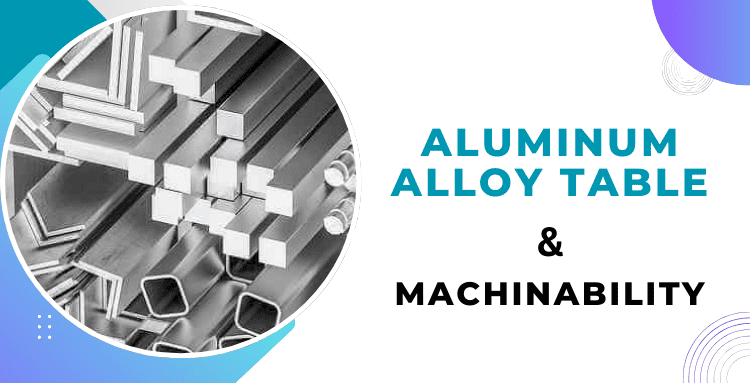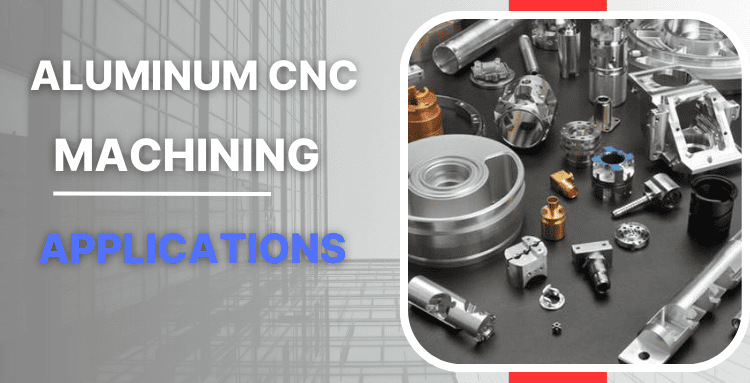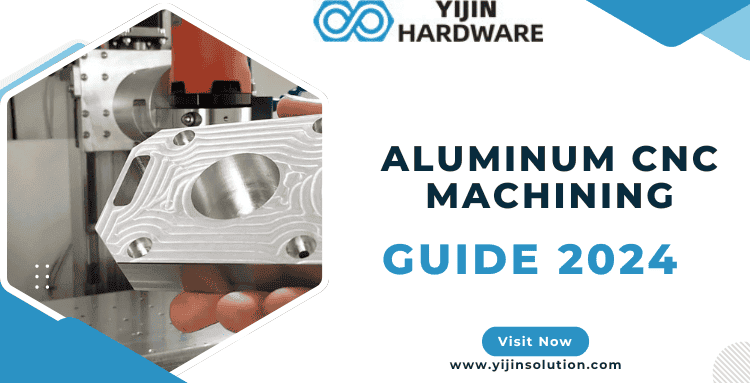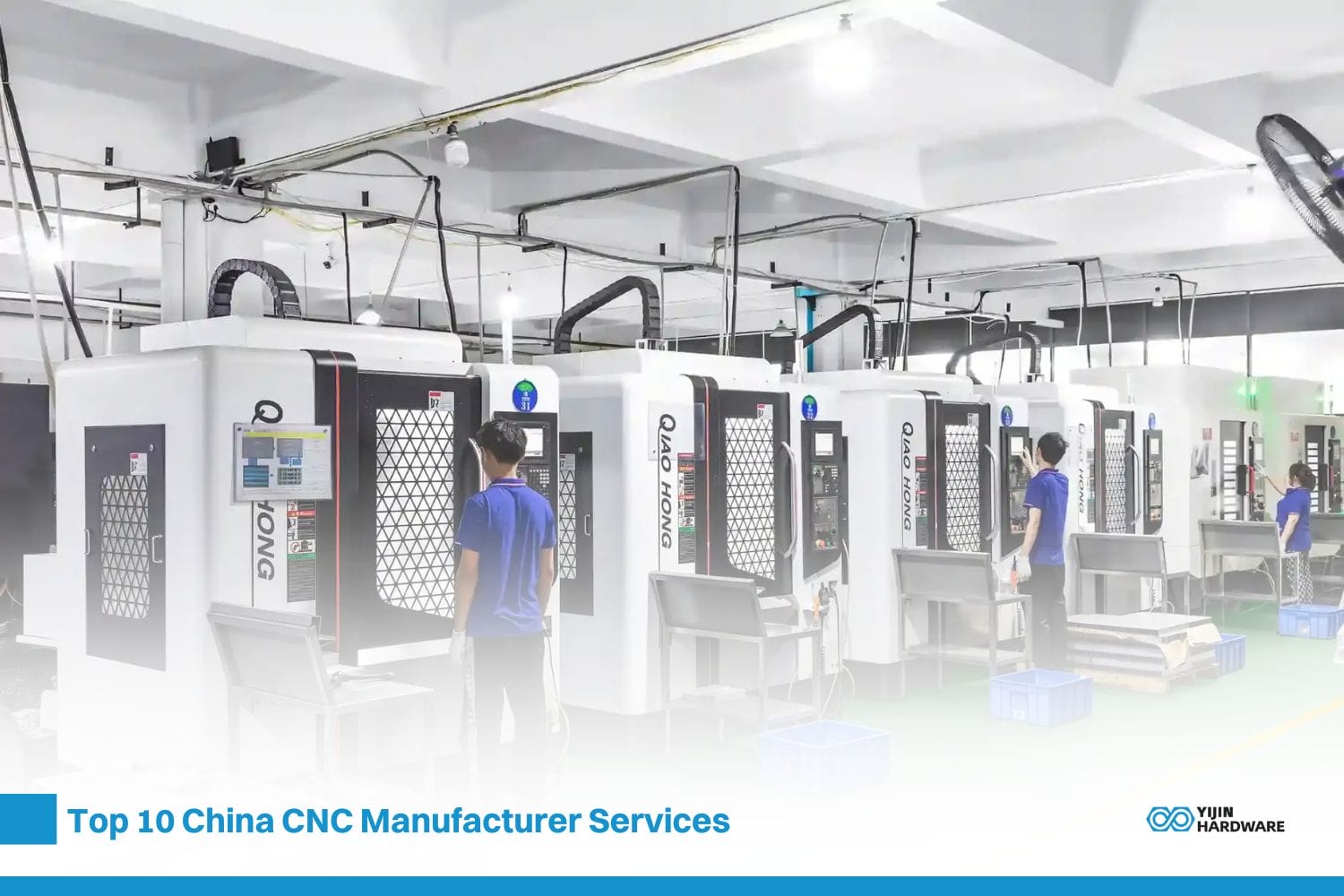It won’t be wrong to if we say that aluminum is one of the most demanding materials in CNC machining. It has 5 prominent qualities which make it distinctive compared to other materials. For instance, aluminum provides excellent machinability. Subsequently, it has both a good strength-to-weight ratio and corrosion resistance.
Like other materials, a lot of research is also being done on aluminum. For instance,a recent study published in Nanotechnology Reviews explains the potential of aluminum alloys reinforced with ceramic particles like silicon carbide (SiC). (Source: Advancements in Aluminum Matrix Composites by Azad Alam in 2023)
According to this research, these composites had better wear resistance and machinability compared to traditional aluminum alloys.
Aluminum Alloy Series Designations and Their General Machinability
| Aluminum Alloy Series | Machinability |
| 1100, 1050 | High |
| 2024, 2017 | Medium |
| 3003, 3004 | Good |
| 4043, 4032 | Medium to Low |
| 5052, 5086 | Good |
| 6061 aluminum CNC machining, 6082 | Medium |
| 7075, 7050 | Low |
| 8006, 8011 | Low |
Similarly, Prof. Skylar Tibbits, an MIT professor, has successfully developed technology which can perform effectively by combining rapid 3D printing with liquid metal
Note: This is the latest report published on January 25, 2024. You can read the complete research article here.
This was a brief introduction to CNC aluminum machining, but we aim to give you a comprehensive overview of everything relevant to this topic. Let’s go.

What is aluminum machining?
Aluminum CNC machining involves every key aspect of manufacturing with a CNC machine, like other materials. Yes, if you don’t know anything about CNC machining, then you must read our beginners guide below:
Also Read:
What is CNC Machining?
So, be it aluminum, or stainless steel, CNC aluminum machining process is the same. Machining tools can be different depending on the alloy machinability. Similarly, surface finishing is different, which also depends on the project’s requirements.
How CNC aluminum is different from other materials?
Machinability
Aluminum is usually considered to have excellent machinability. It is softer than many other materials such as steel or titanium. We can say that cut more easily; there will be faster processing times and less wearing of cutting tools.
Melting Point
The lower melting point of aluminum gives it an advantage over other CNC machining metals. Therefore, it is crucial to use high cutting speeds and appropriate lubricants to bring ideal results.
Chip Formation
Aluminum forms continuous chips during the machining process. This type of chip formation is quite appealing because it avoids chip buildup. This can impact the tool’s performance and lead to poor surface finish.
Ductility
Being a malleable material, aluminum is easy to machine. While this can help with some forming operations, it may result in burrs being formed during machining.
Also Read:
What is Brass CNC Machining
What is Stainless Steel Machining
What are the Common Types of Aluminum Grades?
Pure aluminum comes with a lot of benefits. However, mixing it with other alloys gives you some significant advantages in CNC machining. We have discussed some aluminum CNC machining alloys along with the use cases.
2000 Series
Feature:
Excellent strength and wear resistance.
Benefits:
Better corrosion resistance is a significant feature, particularly in saltwater environments.
Uses:
Marine applications (ships, submarines, boat aluminum CNC parts), high-stress CNC machined aluminum components.
AL1050 & AL1060
AL1050:
Its purity level is maximum (99.5% aluminum). This feature makes AL1050 an excellent conductor of heat and electricity.
AL1060:
Higher aluminum content (99.6%) than AL1050, resulting in slightly better electrical conductivity.
Shared Benefits:
Both grades are highly corrosion-resistant, making them ideal for applications like:
- Chemical processing equipment
- Food industry use
- Reflective signs
- Electrical applications (AL1060 excels here)
Additional Benefit (AL1050):
Excellent for ornamental and architectural design.
AL5052:
Composition:
A combination of aluminum and magnesium.
Properties:
Strong, wear-resistant, corrosion-resistant, and weldable.
Uses:
Widely used in fabrication due to its versatility. Common applications include:
- Boats and marine components
- Gas tanks for airplanes
- Streetlamps
- Electronic enclosures
- Sheet metal applications
AL5083
Composition:
Aluminum, magnesium, with a touch of manganese and chromium.
Benefits:
Excellent resistance to saltwater corrosion.
Uses:
Ideal for marine applications like ships, boats, and docks.
Additional Uses:
Its strength and heat conductivity make it suitable for fireproof compartments and panels (ships, rail vehicles, and vehicle bodies).
A1100
Composition:
Primarily aluminum, offering good corrosion resistance.
Benefit:
Easier to form into shapes compared to other aluminum grades.
Uses:
Commonly used for:
- Exterior building components
- Heat exchangers
- Cooking utensils (often with surface treatments like anodizing for aesthetics and protection)
What Grade of Aluminum Is Used In CNC Machining?

How to choose a suitable aluminum grade for CNC machining? Your choice significantly depends on the project requirement. If you have a complex design, the tooling and material selection will be different. We have listed some ordinary aluminum grades and their prominent characteristics:
Aluminum 6061
Primary Alloying:
Silicon & Magnesium
Qualities:
Toughness, good corrosion resistance, and good strength.
Applications:
Bicycle frames, marine fittings, aircraft structures.
Aluminum 3003
Primary Alloying:
98% Aluminum, Copper & Magnesium
Qualities:
Corrosion resistant.
Applications:
Chemical equipment, cooking utensils, heat exchangers, and architectural gadgets.
Aluminum 7075
Primary Alloying:
High Zinc with small Magnesium & Copper
Qualities:
Excellent fatigue resistance, average weldability, and high strength.
Applications:
Shafts, gears, surgical instruments, aerospace components, boat hulls, camera parts, and high-stress applications (prioritizes strength and fatigue resistance).
Aluminum 2024
Primary Alloying:
Copper
Qualities:
High fatigue resistance, high strength, and suitable for forging.
Applications:
Bolts, aircraft structures, fuel tanks, beverage cans, and high-stress applications.
Aluminum 6082
Primary Alloying:
Silicon & Magnesium (similar to 6061)
Qualities:
Similar to 6061 with good corrosion resistance.
Applications:
Bridges, cranes, and aircraft structures.
Aluminum 1100
Primary Alloying:
99% Aluminum Purity
Qualities:
Highly soft and malleable, excellent corrosion resistance, and the best machinability.
Applications:
Canes, food boxes (utilizes excellent machinability and formability, but not suitable for high-stress applications due to softness).
Aluminum 5083
Primary Alloying:
Manganese
Qualities:
High corrosion resistance, and good strength.
Applications:
Marine fittings, railcars, and shipbuilding structures.
Applications of Aluminum CNC Machining Components

We have previously discussed that pure aluminum is a blend of unique properties. However, combining with a suitable alloy makes it an excellent choice for a range of applications. We have mentioned significant industries along with examples from the relevant parts.
Aluminum CNC Machining for Aerospace
Aluminum is lightweight material. So, it is ideal for landing gear parts and torque links.
Automotive Sector
Frankly speaking, aluminum is becoming more demanding material with each passing day. From EV casting to engine molding, it is a top-notch choice for automotive manufacturers. It improves the vehicle’s fuel efficiency and performance. Wheels, engine parts, and body panels are common examples.
Electrical Applications
Aluminum provides excellent electrical conductivity. This feature makes it ideal for electrical enclosures like PCB enclosures and smartphone frames.
Pharmaceutical/ Food Industry
Aluminum has an inert nature. It is considered a secure material for the pharmaceutical and food industries. Aluminum is widely used in food processing and medical equipment.
Consumer Electronics
CNC machining is considered the best material in consumer electronics. Heat sinks. The heat sink is one of the most common examples, which significantly reduces heat in several devices.
Aluminum CNC Machining Techniques
To get optimum results from aluminum CNC machining, you must consider a mix of procedures, tools, and materials. Here is the breakdown:
Tool Selection
Sharp Tools:
Sharp tools are used for efficient cutting and a cleaner surface finish. As aluminum is a soft and pliable metal, it reduces the risk of material gumming up.
Carbide Tools:
Carbide tools ensure longevity and consistent results and help retain their edges.
Optimize Feed Rate & Speed
High Speed:
High speed is good for getting high results without compromising quality.
Maintain Chip Thickness:
Maintaining chip thickness is crucial to prevent heat generation and re-cutting risks. Further, it is essential to maintain feed rates and tool wear.
Surface Finish for Aluminum Parts
Reducing Chatter:
Use the right helix angles to finish perfectly and eliminate chatter.
Post Processing:
Sometimes, for a perfect finish, you need to use more processes that make the finishing smoother, like buffing, bead blasting, and polishing.
Optimize Tool Paths:
To achieve a smooth finish, trochoidal milling or adaptive clearing is crucial.
Lubrication & Cooling
Cooling:
As aluminum has high thermal conductivity, you must use cooling methods to prevent or reduce overheating.
Use of Right Lubrication:
There are two types of lubricants: mist and flood coolants. The use of lubrication minimizes the risk of aluminum adhering and cools the cutting process.
What are the limitations of aluminum CNC machining?
Although aluminum has several lightweight advantages, it has some challenges and limitations. We have discussed below. A
Susceptibility to Scratches:
Aluminum surfaces are vulnerable to scratches and dents. What does this mean? Your parts can be detracted from their appearance.
Strength Limitations:
Compared to steel, aluminum offers a lower overall strength.
Galvanic Corrosion Risk:
Combining aluminum with dissimilar metals in an electrolyte (like saltwater), it can lead to galvanic corrosion.
Machinability Challenges:
Due to its softer nature, aluminum is more vulnerable to machining. Similarly, achieving tight tolerance can also be a difficult task.
How to Choose Reliable Aluminum Machining Partners?
Finding a seasoned and professional aluminum CNC machining services guarantees your project’s success. There are many ways to choose a reliable custom parts manufacturer. Subsequently, you can check the following points before handing over your project:
- Broad Material Selection
- Vast Industry Experience
- Fast Turn around
- Competitive Pricing
- Fast Quoting Process
- Low and Mass Volume Production
- Advanced Machinery
Check our quotes by uploading your 2D or 3D drawing for your custom parts. For further queries contact us today.
Faqs
Can a CNC machine cut aluminum?
Yes, CNC machines effectively cut and give perfect shape to aluminum. CNC machining shops uses different tools to cut this material to give a perfect shape.
What is aluminum CNC machining?
You may think it a simple process. However, Aluminum CNC machining incorporates different stages. A professional machinist can make aluminum parts with computer-controlled machines.
What aluminum grades are best in CNC machining?
6061, 6063, 7075 aluminum CNC machining, 3003, 2024, etc are good alloys to make custom parts.
Is CNC aluminum good?
If you need light but strong parts, aluminum is perfectly made for you. For more details, it is recommended to contact nearest machining company.
Can aluminum tempered alloys be bent?
No, we cannot bend them.
Can an aluminum sheet be welded?
You can weld aluminum sheets with TIG welding or MIG welding.
Can an aluminum sheet be cut?
Similarly, you can cut aluminum sheets using shearing, laser, waterjet, and plasma cutting.

 info@yijinsolution.com
info@yijinsolution.com (+86) 188-2253-7569
(+86) 188-2253-7569








